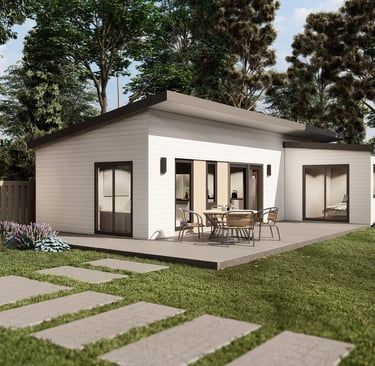ADUs 101: Everything You Need to Know Before Adding an Accessory Dwelling Unit
What is an Accessory Dwelling Unit (ADU)?
An Accessory Dwelling Unit (ADU) is a secondary housing unit on a single-family residential lot. Often referred to as in-law suites, granny flats, or backyard cottages, ADUs provide additional living space while maximizing property usage. These units can include a kitchen, bathroom, and separate entrance, making them suitable for rental purposes or accommodating family members. As housing shortages continue to escalate, ADUs have gained significant popularity as versatile and affordable housing solutions.
Why Are ADUs in High Demand?
One of the primary reasons behind the rising demand for ADUs is the increasing need for affordable housing. Many homeowners are seeking innovative ways to supplement their income, and renting out an ADU presents a golden opportunity. Furthermore, as property prices soar, ADUs offer a practical and economical option for housing family members or renters without the need for a separate property. The flexibility of ADUs attracts a diverse demographic, including young professionals, retirees, and growing families.
Key Zoning Considerations for ADUs
Before embarking on the journey of constructing an ADU, it is crucial to understand local zoning regulations. Different municipalities have different rules regarding ADUs, including size, height, and occupancy limits. Homeowners should check if their property is eligible for an ADU by consulting local zoning codes and regulations. Some cities require permits for construction and may have specific designs that adhere to neighborhood standards. Failing to comply with zoning regulations can result in fines or mandatory removal of the unit, so thorough research is essential.
Design Tips for Your ADU
When it comes to design, the focus should be on optimizing space without compromising comfort. ADUs are typically smaller than traditional homes, so incorporating multifunctional furniture can maximize space utility. It's important to create a cohesive aesthetic that complements the main house while also ensuring the ADU remains visually appealing. Natural light is crucial in making smaller spaces feel larger, so consider installing ample windows or skylights. Additionally, outdoor living areas can enhance the appeal, providing residents with additional relaxation space.
Streamlining the ADU Process with a Professional Consultant
Engaging a professional consultant can significantly streamline the process of adding an accessory dwelling unit to your property. These experts possess a deep understanding of local regulations and can assist in navigating the complexities of the approval process. From conceptual design and drafting building plans to acquiring permits and oversight during construction, consultants help ensure that projects stay on track and within budget. Their expertise can alleviate much of the stress associated with the planning and construction phases, making the journey to adding an ADU a smoother experience.




